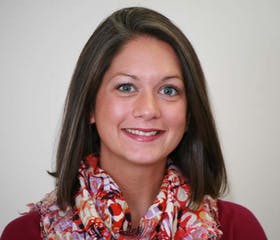VIP MOMENT: Continuing Impactful Work Through Community Mapping
- Virginia
- Mar 8, 2022
- 3 min read

On Tuesday, February 22, LINC’s Very Involved Parents (VIPs) were all ears during LINC’s latest virtual VIP training. LINC VIPS joined the Citizens’ Committee for Children (CCC) for a session on community mapping, a tool that LINC VIPs can use to advance their work as literacy advocates.
With this valuable new tool, LINC VIPs learned how to employ public census data to reach more families in their specific communities. The 90 minute session was led by CCC’s Director of Civic Engagement Programs Laura Janstrom and Community Outreach & Engagement Associate Carlos Rosales, and covered how community mapping works and how it can be applied to LINC’s mission.
Left: CCC Community Outreach & Engagement Associate Carlos Rosales
Right: CCC Director of Civic Engagement Programs Laura Janstrom
What is community mapping?
Community data maps of the five boroughs of New York City make it easier to identify areas where issues facing children at risk are most severe. The maps are grouped by subjects, such as student economic status and graduation rate. United States Census data from the last few years is used to make these maps accurately describe the conditions in the 59 community districts of New York City. Each district on every map is color-coded and ranked from least-to-most at-risk.
How do community data maps work?
There is a lot to be learned from community data maps and much of it is shocking! For example, one set of community map data reveals that New York’s average 3rd through 8th grade reading score is 63.8% in 2021, and in some neighborhoods in the Bronx that number is under 40%. Advocates like our VIPs can then use this information in their campaigns for more schools and educational opportunities in the precise communities that require them the most.
“CCC is thankful for the opportunity to partner with LINC's VIPs. Putting our resources into the hands of parents and community advocates helps us increase our impact by fueling advocacy at the grassroots level. We look forward to future collaboration and to supporting the advocacy efforts of the LINC VIPs,” said Laura Jankstrom of Citizens’ Committee for Children.

LINCs VIPs eagerly participated in the training and ended the session by sharing some of their favorite moments in their communities which can be further developed with community mapping data.
VIP Elizabeth Figueroa said that the last time she advocated for her community, “I asked NYCHA for a piece of land to have a safe haven for children to grow their own food and read what they grow.”
Gladys Gomez, LINC Community Engagement Manager for Kingsbridge and Fordham, said, “The last time I advocated was during a school leadership team meeting regarding the student strength questionnaire assessment known as DESSA.”
Together, the VIPs agreed that being creative, assertive, caring, and committed to supporting each other are the most important qualities in a community advocate. As they go on to become active in parent associations at their children’s school and lead other community movements on their children’s behalf, they are excited to have an effective new tool under their belt. For those who missed it, additional training sessions on community mapping will be held throughout the month of March during LINC’s VIP Academy.
If you would like to become a literacy advocate in your neighborhood, please contact LINC’s VIP Program Manager Wilkarlys Zaman at 212-620-5462, ext.121 or wzaman@lincnyc.org.



Comments